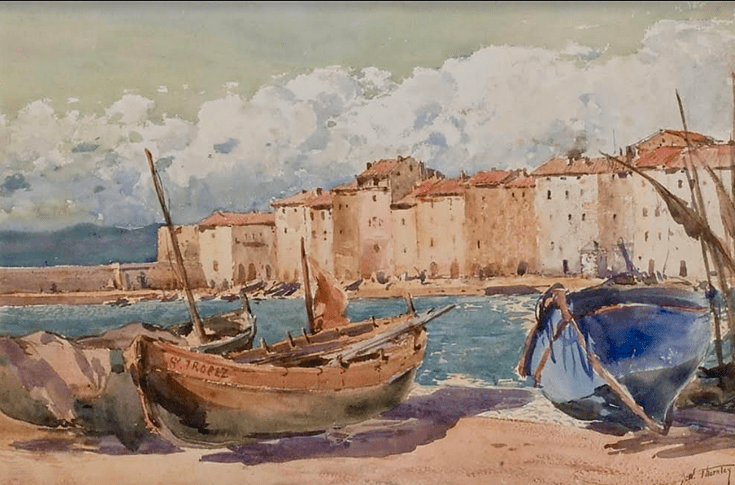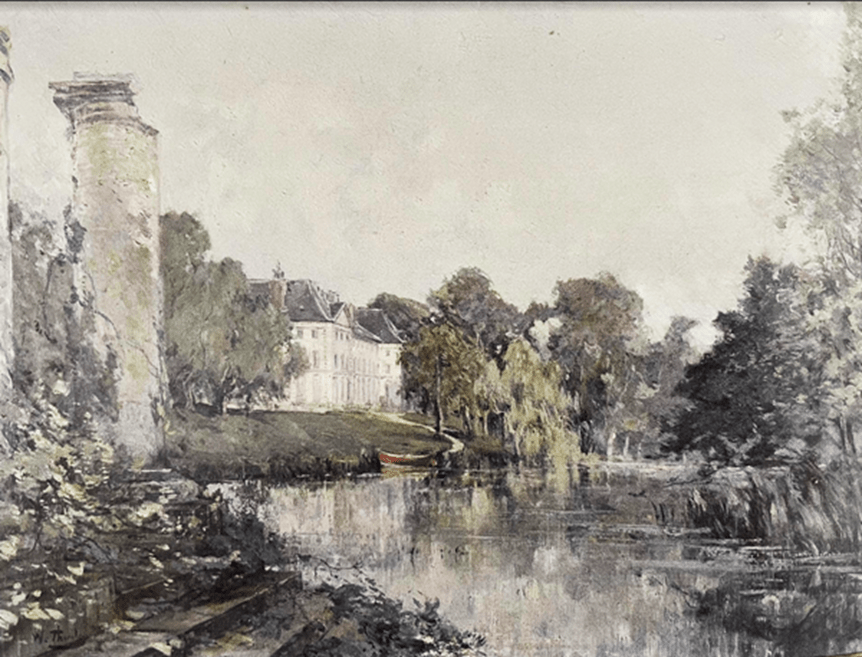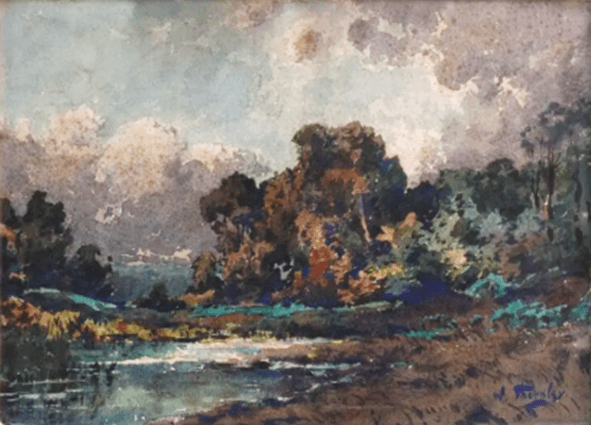Le Port de Saint-Tropez. Aquarelle. Ce visuel (© C.Brossais – CDVO – Musée Thornley) est présenté avec l’aimable autorisation du Musée William Thornley. L’aquarelle a fait l’objet d’une publication le 25 juin 2024 sur le site Insta de la Ville d’Osny.
En 1880, William Thornley entreprit un grand cycle de voyages. Il se rendit notamment en Provence, et en Riviera française et Italienne. La même année, il fit même un voyage à Malte.
C’est probablement à cette occasion, bien avant 1900, qu’il peignit cette aquarelle sur le Port de Saint-Tropez. Cette belle aquarelle, désormais propriété du Musée William Thornley, a été exposée dernièrement à l’occasion d’une exposition intitulée « Voyage en France avec William ». Sur les pas de Claude Monet, William Thornley se laissera séduire par les couleurs chaudes du Midi de la France où le jeu des couleurs et de la lumière se déclinent parfois de façon surprenante en des ombres bleutées.
Sa palette, plutôt sombre de son début de carrière, se traduira alors de façon plus lumineuse, plus audacieuse et chatoyante, comme, par exemple, dans son sublime « Paysage de Méditerranée » quasi impressionniste

The Port of Saint-Tropez. Watercolor. This visual (© C.Brossais – CDVO – Thornley Museum) is presented with the kind permission of the William Thornley Museum. The watercolor was published on June 25, 2024 on the Insta site of the City of Osny.
In 1880, William Thornley undertook a major cycle of travels. He notably visited Provence, and the French and Italian Riviera. The same year, he even made a trip to Malta.
It was probably on this occasion, well before 1900, that he painted this watercolor of the Port of Saint-Tropez. This beautiful watercolor, now owned by the William Thornley Museum, was recently exhibited during an exhibition entitled “Travel to France with William”. Following in the footsteps of Claude Monet, William Thornley will let himself be seduced by the warm colors of the South of France where the play of colors and light sometimes comes in a surprising way in bluish shadows. His palette, rather dark at the start of his career, will then be reflected in a brighter, more daring and shimmering way, as, for example, in his sublime, almost impressionist “Mediterranean Landscape”.



